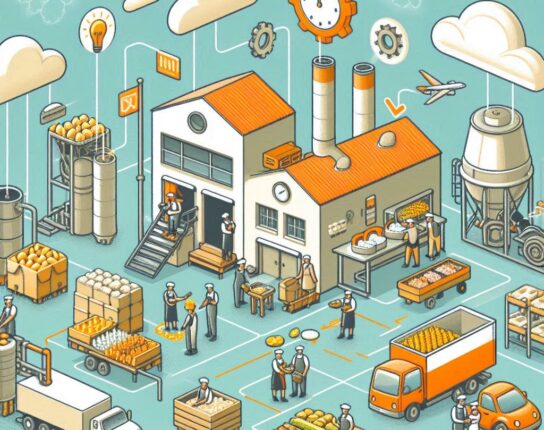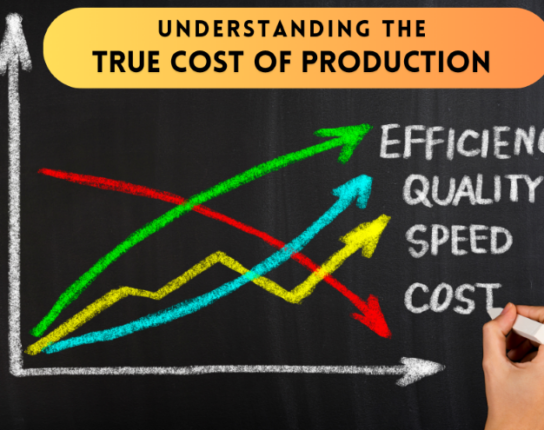The Food and Agriculture Organization (FAO) reports that the world will need to continue increasing its food production capacity until there’s been a 60% rise from 2005 levels by the time we reach 2050. We need this expanding food production capability if we wish to feed the future world population. While many people are concerned about managing natural resources, excess food waste gets relatively little attention. This is when Effective Strategies for Reducing Food Waste in Manufacturing comes in.
Forty million tons of food is lost or wasted each year in the US. That’s a staggering amount of food wasted instead of feeding hungry people. With a food waste reduction of 25% globally, we’d have all we need to provide for everyone who is suffering from malnourishment right now. Global food manufacturers can help meet that goal by refining and adjusting food production processes to ensure that more food reaches the consumer in a ready-to-eat state. Solving the problem of food loss is a real and tangible thing that everyone can address starting today.
1. Organize Better Rotation of Stock
The first thing manufacturers can do is stay on top of their stock rotation. Each plant-based raw ingredient has a different life cycle. From delicate berries that can spoil in a week, to root vegetables that you can store for months, it’s essential to maintain the optimal schedule for each ingredient.
Prioritize processing for batches closer to spoil, and switch production where you’re able to use up ingredients that are at greater risk. If you stay on top of your production schedule and proper rotation, you should rarely have to emergency-process any ingredients. Still, having the ability to direct your production capacity at will is of great benefit for reducing food waste.
2. Better Storage Conditions
Many fruits and vegetables can’t be stored together (like apples and bananas) if you want to prolong their shelf life. Additionally, many ingredients require different storage conditions to maintain optimal shelf life throughout the processing journey. All of these various factors can be hard to organize in a way that is quick and easy to access.
Knowing the reasons behind the different storage and processing procedures is essential for every employee directly involved in the manufacturing chain. An intelligent, intuitive, and AI-driven management system can help keep production on track and help you reduce waste.
3. Better Fulfillment Predictions
Food manufacturers often face spoilage issues when they over-anticipate product demand. Feeding data from prior years into a deep-learning algorithm can help you predict product demand from your customers more accurately. By having better representations of future demand, you reduce the risk of over-buying ingredients and having them spoil before they can be processed.
Tracking year-over-year orders will alert you to past or developing trends. It can also help you prepare for seasonal rushes and slow-downs soon enough to make manufacturing adjustments as-needed, instead of at the last minute.
4. Strategic Ordering
If you know exactly what you need and when you need it, you can order raw ingredients at the optimal moment. Ordering perishable stock at the wrong time can result in spoilage before you can process it. Custom products might require equipment changeover delays that affect processing time. Knowing the intricacies of your production lines and planning for every aspect is critical in maintaining efficiency.
Having a clear idea of each production run’s supply chain and timing can offer immense advantages in reducing food waste. Placing orders so that they arrive right before you need them for processing is always the goal, but important details can fall through the cracks, leading to wasted products.
5. Increase System Monitoring and Control
As automation becomes increasingly common in all aspects of food production, maintaining system reliability becomes more and more vital. Power fluctuations, machine malfunction, and glitching software can cause costly delays and contribute to food spoilage.
If batches of product are burnt, ruined, contaminated, or spoiled, your company will have to discard them. As food safety regulations become more stringent, the preventive measures to comply will need to follow suit.
By implementing a robust system of fail-safes and advanced warning systems, you can head off problems before they become disasters. Catching errors sooner reduces ingredient loss and improves product quality and consistency.
6. Consider ERP Software
Enterprise Resource Planning (ERP) software is an effective way to reduce waste, prevent mistakes, and boost productivity. By allowing your ERP framework to manage mundane tasks, collect data and remind you of vital tasks, you can get more tasks done with fewer errors.
Harvest Food Solutions offers HarvestERP to help you manage every aspect of your perishable foods manufacturing process. By staying on top of resource management, you can avoid costly mistakes and reduce ingredient waste. Our software is a specialized version of Microsoft Dynamics NAV ERP, tailored specifically for the perishable foods market.
Whether you deal with dairy, vegetables, pet food, snacks, organics, specialty food, or bakery items, we can help raise your business to the next level. Stop wasting time, losing money, and throwing away resources by bringing peak efficiency to your production system.
By partnering with Harvest Food Solutions, your company can cut ingredient spoilage costs and contribute to increasing food availability for everyone.










